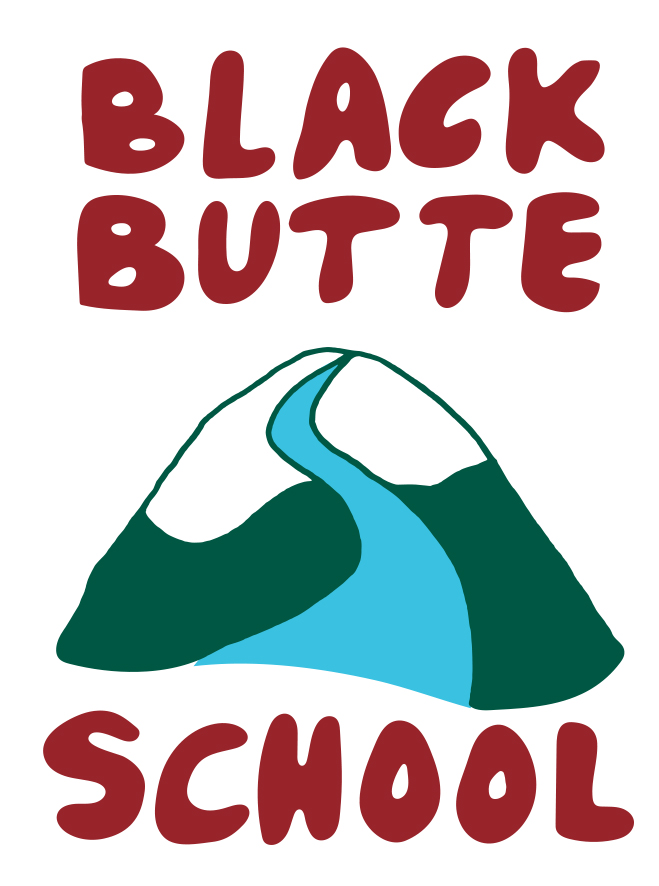Facilities
Our Campus
Our K-8 school is located in heart of the Metolius Basin. The basin is home to a vibrant community of people, a wild and scenic river, and a diversity of plants and animals–all of which have important lessons to teach. Our campus includes a historic schoolhouse, a new naturescape playground and our grounds border the Deschutes National Forest. The 1951 school building is undergoing renovation; see Bond Updates for more information!
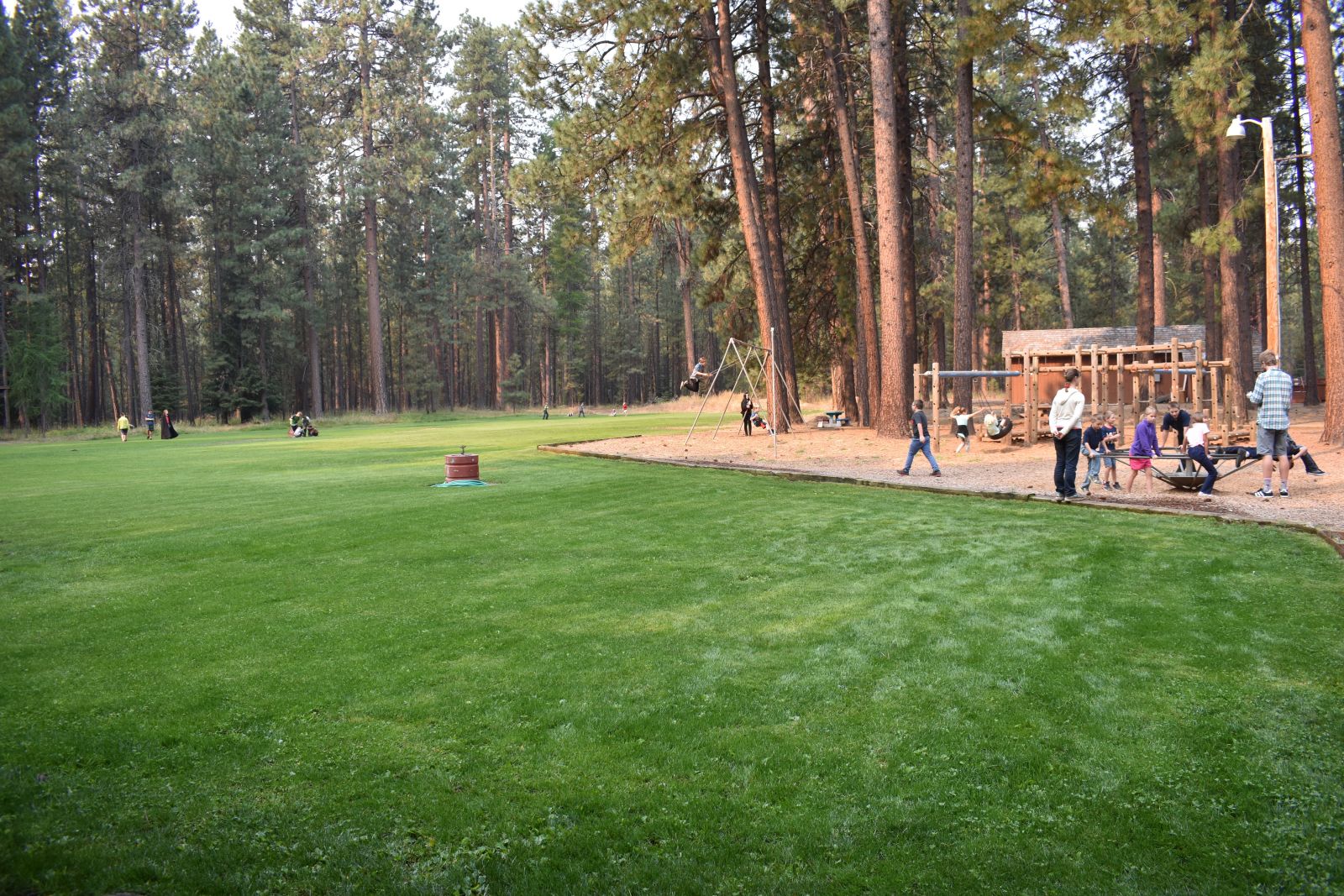
Long Range Facilities Plan & Facilities Assessment
In January 2020, Black Butte School District, received a Technical Assistance Program grant from the Oregon Department of Education to hire an architectural and engineering firm to conduct an assessment of all District-owned facilities. BBSD contracted with BLRB Architects to conduct the work, which was completed in Fall of 2021 (see report below).
Once the Facilities Plan was completed, work began to create a Long Range Facilities Plan (LRFP), which will guide the next ten years of maintenance and upgrades on the District’s facilities. BBSD reached out to local taxing entities and conducted a series of community meetings to both share respective long-term goals, as well as brainstorm ideas for how to meet those goals within their local tax base. The District has invited representatives from local business and government agencies, as well as extended the invitation to the entire community. With extensive community input, the District completed a LRFP, which is linked below.
Improvement Projects
Proposed Fiber Optic Internet to Camp Sherman Community
Over the last decade Black Butte School has been working to improve the broadband internet capacity at the school and throughout the District. During the 2020-21 school year, Black Butte School received funding from the Oregon Department of Education to support a Comprehensive Distance Learning program in response to COVID-19. Some of those funds were used to fund the Broadband Needs Assessment. Black Butte School District contracted with Central Oregon Intergovernmental Council to conduct the research and write the report. The report provides a picture of the school and community’s broadband access and needs.
The primary goal of the needs assessment is to serve as a supplemental report to be incorporated into a future Jefferson-county-wide broadband assessment and feasibility study. A secondary goal is to utilize this assessment to support future Camp Sherman-specific grant applications or partnerships with internet service providers who may be prepared to make an investment in expanding access to the Camp Sherman community before the Jefferson County work has been completed.
CenturyLink (also known as Lumen and Qwest) won an auction called the Rural Digital Opportunity Fund (RDOF) that includes the Camp Sherman census block within a constellation of census blocks across Oregon. RDOF is a federal program through the Federal Communications Commission started in 2020 which was designed to inject billions of dollars into the construction and operation of rural broadband networks. Companies that won the RODF auction for a particular census block were given some funding to support their projects and they are the only companies eligible for federal and state funding to complete them. RDOF winners are obligated to build fiber, or be subject to a fine. Having received the RDOF award, CenturyLink is obligated to complete fiber to the home in the Camp Sherman census block by the end 2028.
New Playground
Black Butte School was thrilled to have the new playground completed just in time for the 2023/24 school year. The project intially began in Winter 2019. Because the school playground lies partly on United States Forest Service land, the District was required to go through a lengthy permitting process to ensure no damage was done to archaeological resources.
The Parent Teacher Organization has been fundraising for the playground also since 2019 and secured over $40,000 from donors both large and small! The Ford Family Foundation awarded the school an additional $25,000 grant. The remaining funds needed for the project came from the Black Butte School District General Fund.
The fundraising campaign included the option for donors to receive engraved pavers with donations over $1000. While the playground is complete, engraved pavers may still be purchased and installed on the playground walkway. Funds generated from this campaign will go toward the next PTO goals, which include a Washington D.C. trip for upper grade students in 2025. See the link below for more info.
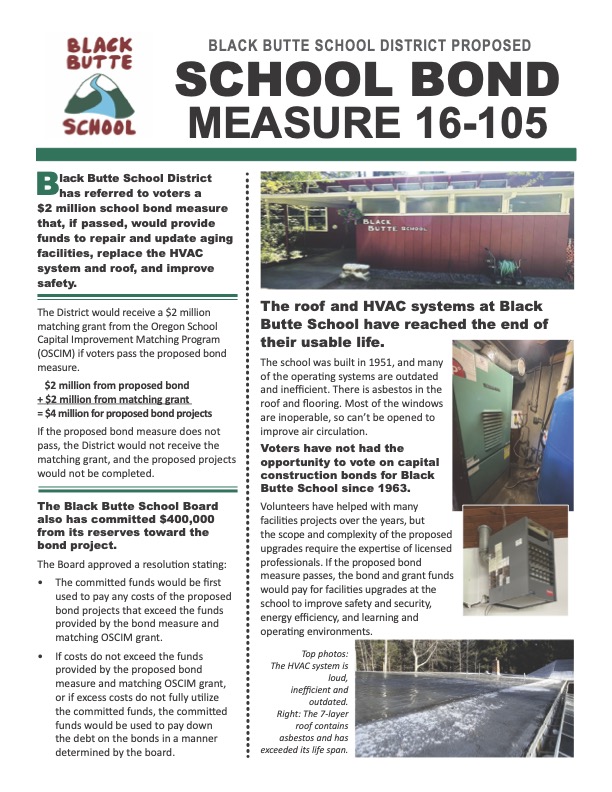
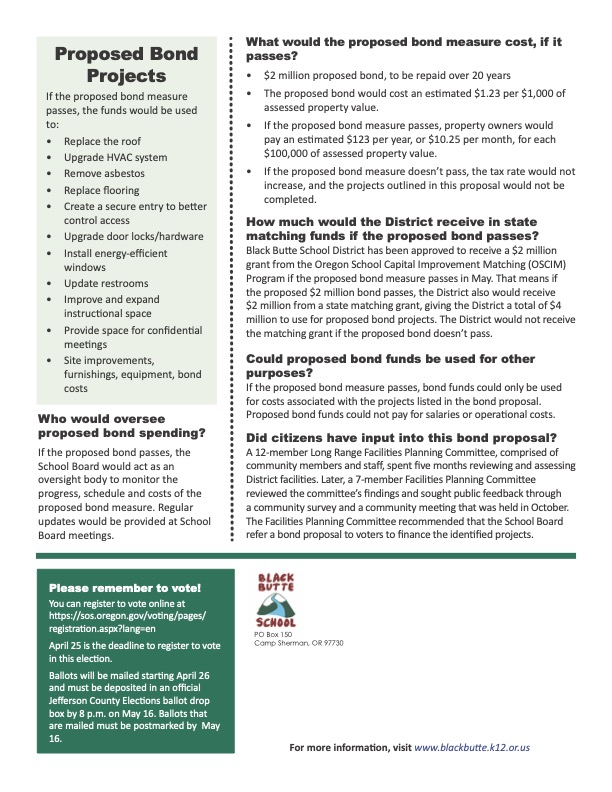
2023 Bond is approved!
The Black Butte School District is pleased to announce that the school bond that was on the May ballot has passed. The most recent vote tally shows it passing with 93 yes votes compared with 72 no votes. This approval raises not only 2 million dollars from our taxpayers but allows us to receive a 2 million dollar matching grant from the state for a total of 4 million dollars toward capital improvement projects. We recognize that this is a large investment from our small community. We promise to do our best to use this resource in a way that will have the most impact for our students, families, friends, and neighbors. Thank you Black Butte School Community for your show of support and investment in the future of our school.
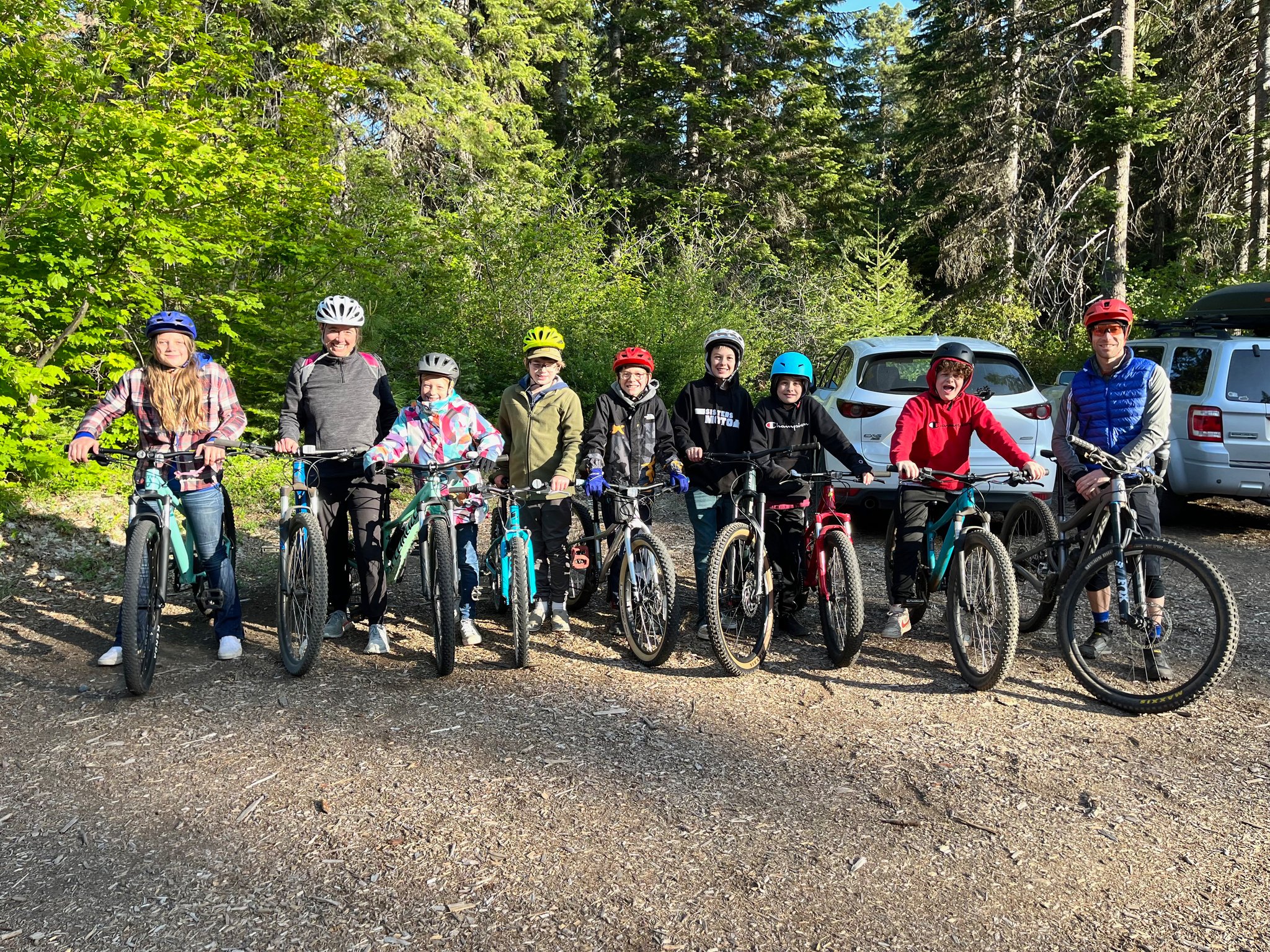
Healthy & Safe Schools Plan (HASS Plan)
In 2017, the Oregon State Legislature passed SB 1062, which requires that, every school district, education service district, and public charter school develop a Healthy and Safe Schools Plan (HASS Plan). Each organization’s HASS Plan has specific requirements that must be included for the HASS Plan to comply with state law. All HASS Plans are due to the Oregon Department of Education by July 1, 2019. Additionally, each school district, education service district, and public charter school is required to certify annually that the organization continues to comply with the requirements of the HASS Plan by filing an Annual Statement. The following plan was developed by Black Butte School District to meet these requirements:

Integrated Pest Management Plan
As of July 2012, all schools in the state were mandated to have an Integrated Pest Management (IPM) plan. The IPM plan focuses on prevention and monitoring, with alternative eradication methods. The use of pesticides is the last choice and those pesticides allowed in schools are highly regulated. Part of the plan requires annual notification to parents and students as to pest emergency procedures, notification of posting procedures, and a list of potential pesticides to be used.
Notification and Posting:
When prevention or management of pests through other measures proves to be ineffective, the use of a low risk pesticide is permissible. Non-emergency pesticide applications may occur in or around the school at any time; however, preference shall be given to times when students are not in the building. If the labeling of the pesticide product specifies a reentry time, a pesticide may not be applied to an area of school where students will be expected before the expiration of that reentry time. If no reentry time is on product labeling, reentry will be based on the training and judgment of the IPM plan coordinator.
Written notice, via email, of a proposed pesticide application will be given at least 24 hours before application occurs. This notice will contain the name of the pesticide product, the EPA registration number, the expected area of application, the expected date of application and the reason for application.
Warning signs will also be placed around the pesticide application area no later than 24 hours prior to pesticide application and remain in place at least 72 hours after pesticide application. Pesticide product labeling may indicate a longer reentry time. The warning sign shall read, “Warning: Pesticide Treated Area.” The warning sign shall also give the date and time of application, expected reentry time, and provide a telephone number for the IPM plan coordinator.
Pest Emergency Procedures:
The declaration of the existence of a pest emergency is the only time a non low-impact pesticide may be applied. Evacuation and cordoning off the area are the first steps in a pest emergency. Notification is still required. If the pest emergency makes it impractical to give a pesticide application notice no later than 24 hours before the application occurs, the IPM plan coordinator shall send notice no later than 24 hours after that application occurs.
Warning signs shall be placed around the application site as early as possible, but no later than at the time the application occurs.
Notes:
a) All pesticides used will be used in strict accordance with label instructions.
b) All pesticide application shall be administered by a state certified Public Pesticide Applicator.
c) No pesticide product, or active ingredient, shall have the signal words “warning” or “danger” on the label.
d) No pesticide used shall be classified as a human carcinogen or probably human carcinogen under the United States Environmental Protection Agency 1986 Guidelines for Carcinogen Risk Assessment.
e) No pesticide used shall be classified as carcinogenic to humans or likely to be carcinogenic to humans under the United States Environmental Protection Agency 2003 Draft Final Guidelines for Carcinogen Risk Assessment.
List of Low Impact Pesticides:
Product Name: EPA Registration Number: Type:
Crossbow 62719-260-5905 Herbicide
Raid Wasp/Hornet Spray 4822-553 Insecticide
Terro Liquid Ant Baits 149-8 Insecticide
Other:
The Black Butte School District historically has had few pest problems. Ants, yellow jackets, and mice are the main areas of concern; fortunately, pesticides rarely are needed to effectively control these species. The use of pesticides and herbicides also has been historically low in the district.
